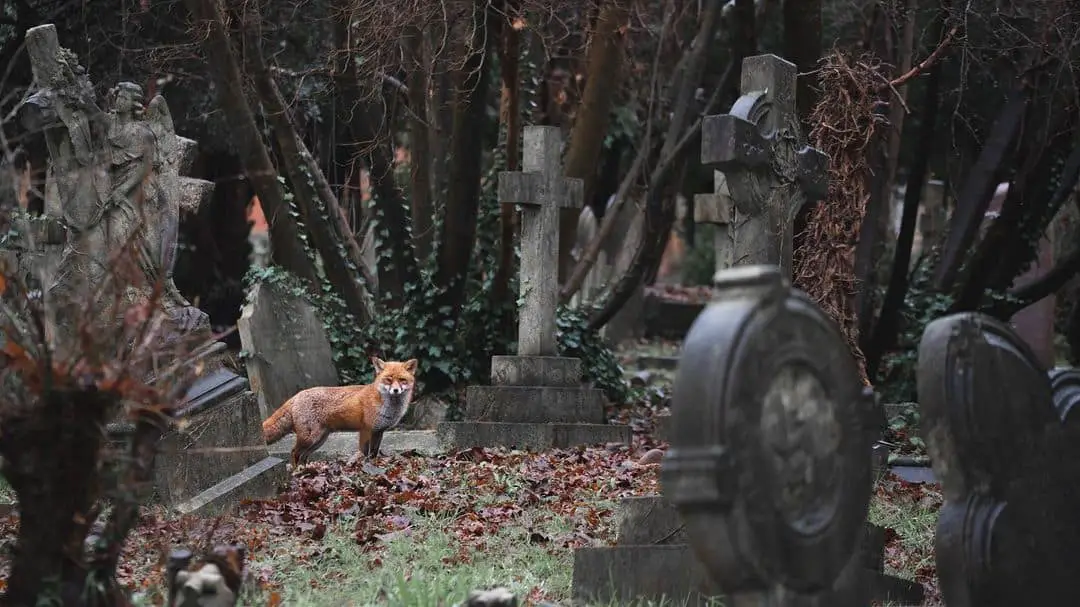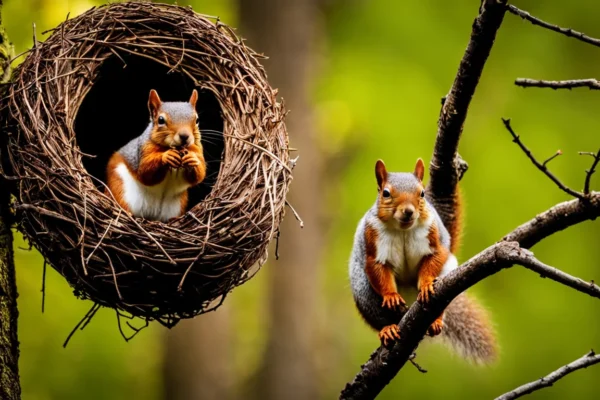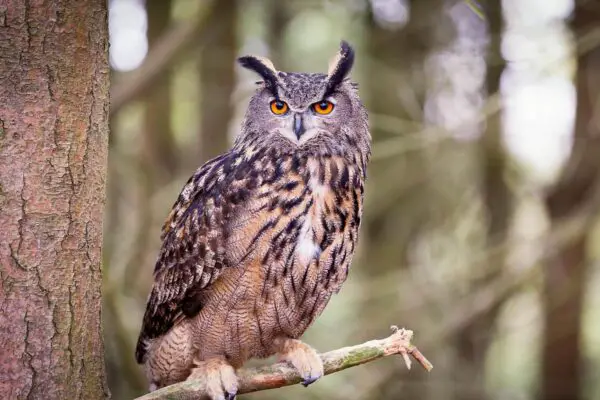Foxes are cunning, specialized hunters; in some parts of the globe, they even hold the position of top predator. These scavengers hunt and kill their own prey as well as scavenge for human waste and corpses. They are constantly on the lookout for an easy meal.
These little yet sly canids possess speed, agility, and brains—true survival. Therefore, it’s difficult to think of anything that might pursue and devour a fox. Nonetheless, a number of creatures would gladly capture and devour foxes, such as huge predators like owls and eagles, as well as larger carnivores that may eat the foxes they kill in an attempt to eliminate competition in their area. Bears, wolves, mountain lions, and lynx are a few of them. Other top fox predators include people and smaller animals like wolverines. Naturally, a plethora of other scavenger animals exist that will gladly consume any fox corpse they come upon.
An animal’s willingness to consume a fox is highly dependent on the situation. Here, we’ll examine more closely a few of the fox-eating creatures, the circumstances under which they might consume a fox, and some intriguing anecdotal data. Come learn more with us!
A Short List of Animals That Consume Foxes
Let’s quickly review some of the species that will be the subject of our attention today. The following are some of the main predators of foxes:
predatory birds, such as owls, hawks, and eagles
Bigger predators such as lynx, bears, wolves, coyotes, mountain lions, wild dogs, and leopards
Smaller predators such as mink, ermine, skunks, wolverines, and long-tailed weasels
Snakes
People
scavenger animals (corvid birds, for example)
Other foxes
Animals That Kill Foxes versus. Predators of Foxes
To begin with, it’s critical to distinguish between animals that would kill a fox for food and those that would kill it to eliminate the danger it posed. By definition, predators are creatures that hunt, kill, and consume their prey. Foxes are often in direct conflict with bears, wolves, coyotes, lynx, wild dogs, jackals, leopards, and wolverines, among other big predators, when they kill a fox. Superpredation is the term used to describe situations in which one predator kills another. Carnivore diet overlap may threaten the survival of competing species and lead to territorial conflicts within an area. The act of eliminating a rival to drive it out of the region is known as competitive exclusion.
Because they are larger and heavier than foxes, all of the big carnivores on the aforementioned list would prevail in a battle between the two species. When confronted with one of these animals, a fox would often flee rather than engage in an exhausting (and perhaps lethal) battle. Alternatively, a fox can be displaced as a result and have to leave the area.
Coyotes and foxes are colliding more often these days, especially in North America’s cities. Due to human actions such as habitat destruction and increased agricultural land, animals that are able to adapt, such as coyotes and foxes, have migrated into urban areas and replaced native fauna. Because both species are very opportunistic, there is a large overlap in their diets. Conflicts between them when they share a territory sometimes result in brutal combat, with foxes typically coming out on top.
Foxes have also been reported to be killed by domestic dogs. There is a theory that fox populations are much lower in nations where there are more stray or feral dogs living in urban areas. But instead of killing a fox to eat it, they would treat it more as a territorial dispute.
Any of these massive animals that managed to come find a fox and battle it to death could take advantage of the chance to eat the corpse, but generally only if they were in a food crunch. All animal species are susceptible to going to extreme lengths during lean seasons, including consuming items they would not otherwise eat.
The fact that bears often take the quarry of other carnivores—including foxes—is one intriguing aspect of the relationship between foxes and bears. Since bears are such adepts at conserving energy, having a fox murder them for food is a much more alluring proposition than going on a hunt and capturing a fox for one’s own consumption.
Given this, one may argue that there aren’t many natural predators for foxes (those who kill a fox on purpose to consume it). This raises the issue of what creatures foxes naturally prey on.
Foxes’ Natural Predators
Perhaps the only creatures on our short list today that would kill a fox to consume it are birds of prey, such as owls, hawks, and eagles. Eagles, like the Golden Eagle, are the primary fox predators throughout much of Europe. An adult fox is probably too heavy for most eagles to lift off the ground. This implies that they will either hunt fox cubs when the chance arises or kill and eat a fox on the spot instead of taking it elsewhere. (Check out this incredible photo of an eagle trying to grab a rabbit that a fox had just captured below. The fox is clinging to existence!
An eagle or hawk’s powerful beak and lethal, razor-sharp talons allow them to capture and hold onto bigger prey that is too heavy for them to lift. Golden eagles have been seen hovering above foxes in Scotland, UK, then diving in swiftly as their prey turns away. After that, the eagle would forcefully sink its claws into the fox’s throat and hold on until the fox passed out from weariness. A harsh yet efficient method when your target is bigger than you and has powerful jaws and teeth of its own.
Since foxes are nocturnal animals that are most active at night, eagles are diurnal hunters, meaning they are seldom presented with the chance to hunt them. This is a benefit for owls.
The majority of owl species are nocturnal, although others are diurnal or even crepuscular, meaning they are most active at dawn and twilight. Like hawks and eagles, owls have powerful, sharp claws. They’ll dive in quickly and forcefully, surprising an unwary fox. Any fox that is struck by this or the next talons that impale it will probably die.
Other Occasional Fox Predators
Young fox pups have been seen to be taken as food by smaller predators such as mink, wolverines, skunks, ermine, and long-tailed weasels. Larger snakes have also been known to do this; they may choose naive fox pups as their prey. A python and a fox were said to have fought in Australia; the fox bit the python on the head, but the python ultimately prevailed by squeezing its struggling victim.
Despite being largely scavengers, wolverines are ferocious animals that would attack a fox if the chance arose (albeit this would be an uncommon occurrence). Wolverines have been known to repeatedly assault and injure bigger prey species, causing it to exhaust and bleed out, making it simpler to go in for the kill without putting the wolverine at risk.
Foxes Consuming Other Foxes
Animals may resort to cannibalism during hard times since the natural world may be a cruel place. Foxes have been known to turn on one another in a frantic attempt to find food when they are severely hungry or afflicted with illnesses that change the brain, such as mange. They have sometimes been seen stealing a cub from a different fox mom.
People Consuming Foxes
Regretfully, the greatest danger to a fox’s survival in many parts of the globe is people. In some countries, people hunt foxes for fun and kill them by running them down with hounds. People in Mongolia utilize eagles to hunt foxes during the day. Fox-hunting is done for a variety of reasons, including as fun, pest management (where foxes represent a hazard to livestock), or the acquisition of their fluffy pelts.
Nowadays, it is uncommon for individuals to hunt foxes exclusively for food, although it does occur. The Mongolians hunt foxes with eagles, and then they consume the corpses. People will also eat foxes in some countries when they have been shot or trapped in snares on public or private territory where hunting is permitted.
Scavengers that consume dead foxes
If they came across a dead fox, a great number of animals would consume it. Vultures and corvids in particular are skilled at identifying new corpses and seizing them before other birds do. There are several kinds of decomposers, such carrion beetles, which deposit their eggs in the remains of animals. After hatching, the larvae will consume the corpse as a nourishing first meal. These species are vital to the natural world because they clean up debris and recycle nutrients back into the soil, which supports the larger ecosystem. Almost any animal that is used to consuming carrion will be happy to take advantage of a fox corpse.




![What are Bird Watchers called? [Complete Guide]](https://birdsology.com/wp-content/uploads/2023/06/BI_driftwood_beach_bird_watching_with_binoculars_8314379553-600x400.jpg)


One thought on “Which Animals Eat Foxes? Predators of Foxes”